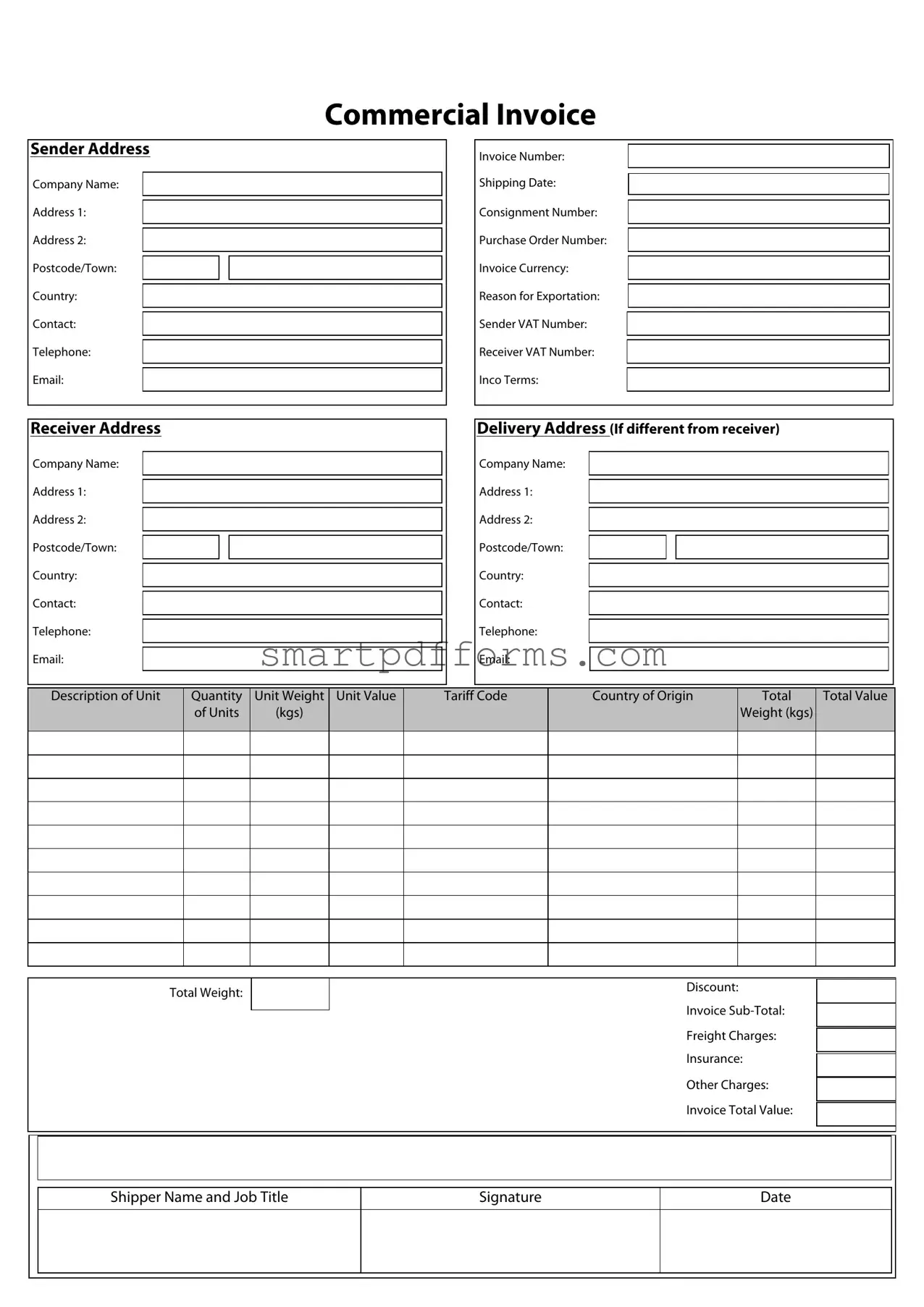In international trade, navigating the complexities of shipping and customs clearance requires meticulous documentation. One crucial element in this process is the Commercial Invoice form, a key document that provides essential information about the transaction between the buyer and the seller. The form contains detailed sections including sender details, such as the company's name, address, and contact information, alongside receiver details mirroring this information for the party receiving the goods. It delves into specifics about the shipment, like the invoice and shipment numbers, currency of the transaction, reasons for export, and relevant VAT numbers for both sender and receiver. Terms of sale are outlined, possibly detailing Incoterms, which are standard trade definitions used globally. The document also describes the goods being shipped, with information like descriptions, quantity, unit weight, and value. Additionally, delivery details are specified, potentially differing from the receiver's data, including contact information for the delivery liaison. The invoice sums up with a total declared value, incorporating subtotal, shipping, insurance, and other costs. Crucially, it asserts the accuracy of the information provided with a declaration, typically including the name, signature, and job title of the company representative, alongside the date and additional comments about the goods (e.g., hazardous material details or compliance codes). This document not only facilitates the smooth transition of goods across borders but also serves as a key record for accounting and regulatory compliance, underscoring its importance in international commerce.

